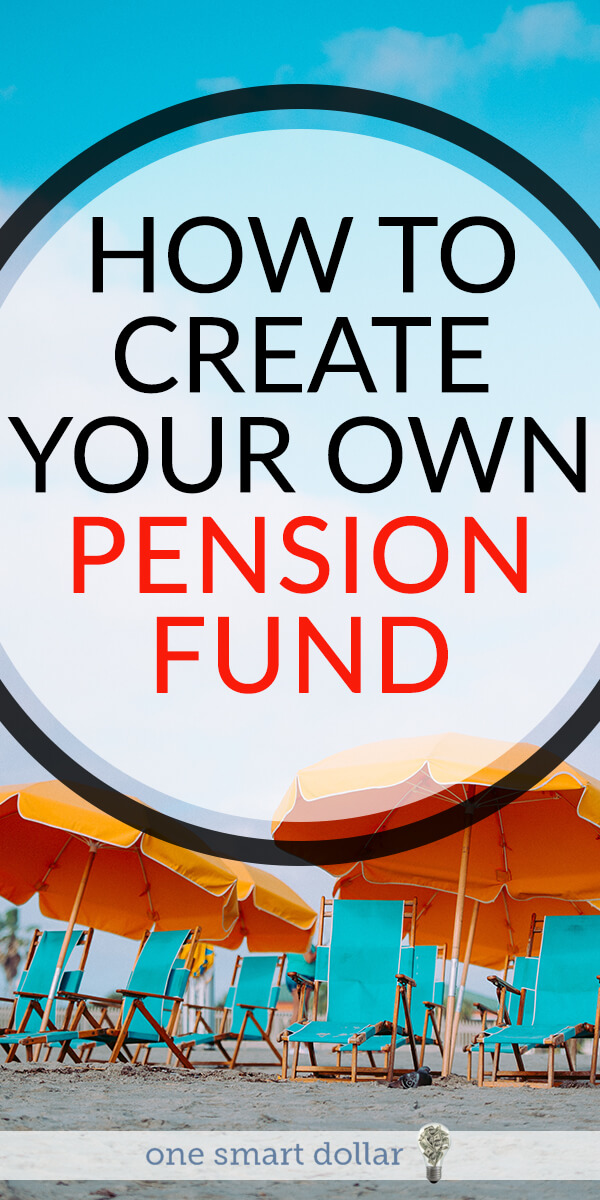
Many workers lament the days where you could give 30 or 40 years of service to a company, and then receive a pension that would take care of your needs the rest of your life. They were great plans for the worker, but they were running out of money. People are living much longer lives than they used to (nearly 10 years longer, on average, than half a century ago).
Today, there are still some programs available, but to really enjoy a comfortable retirement, you have to provide for yourself. You have to create your own pension fund. Don’t let the terms life expectancy, pension fund, or any of the other financial words scare you though. These are actually easier to put in place than most people realize.
Here are four ways that you can build a pension for yourself.
Contribute to an Annuity
An individual annuity is the closest thing we have to an employer-sponsored pension. Using this financial vehicle, you can create your own annuity pension plan, and never outlive your money. How much your monthly income is during retirement all depends on how much you contribute to the annuity.
Throughout your working career, you contribute to this account. This is called the accumulation phase. The account grows in value based on the strength of the insurance company that backs it and based on the underlying investments. When you retire, you hit the switch. Now instead of accumulating, you enter the annuitization phase. Based on your life expectancy, the insurance company that holds the annuity will pay you a set amount, every month, for the rest of your life. The risk is that you may live one more year, or you may live 50 more years. No matter what, you won’t outlive the money.
Be careful, some annuities have high fees, low payouts, and in our current low-interest environment, the guaranteed products aren’t really enticing.
Create a Portfolio with Dividends
Regardless of whether you have an employer-sponsored pension or a personal annuity; you should still be saving in an IRA, non-qualified account, or a 401(k). As you age, your risk tolerance will be changing, and your portfolio will be rebalanced appropriately. Depending on your retirement needs, your portfolio can be designed so that you never have to touch the money inside of it.
Related Articles:
- How Much Should I Have in my 401k?
- 5 Common Mistakes to Avoid When you Rebalance Your Investment Portfolio
To make this work, your money is invested in products that pay a dividend. Every time a dividend is paid, you take it in cash rather than reinvest it. For example, your portfolio is worth $1 million and pays 5% in dividends. You collect $50,000 each year and never touch the $1 million that is invested. Theoretically, the investment grows, and thus your income does as well. But you take the risk of a market downturn hitting, and you lose a large chunk of your income.
Set Up a Portfolio for Monthly Withdrawals
To avoid the issue of your income dropping, you can build a portfolio that is designed to last as long as you do. Throughout your working career, you invest as much as you can into your accounts so that when you retire the principal amount is as large as possible. From there you “annuitize” on your own.
Using a retirement planning calculator, and using best guess for the rate of growth, you can determine how much you can withdraw every year until you die. Suppose your life expectancy is another 40 years. You have $1 million invested, and you expect it to grow at 5% each year. You can withdraw $56,000 each year until you die (this doesn’t account for inflation, living longer, or years where withdrawals may differ). Your risk is that you live too long and outlive your money.
A Mixture of Your Own Pension Plans
Every pension plan has risk attached to it. In order for you to stay financially safe during retirement, you may want to create a mixture of different plans. When it comes time to retire, you may want to put some of your money into an immediate annuity that will provide a stable base income. Have some where you only withdraw the dividends and have a “slush” fund that provides any discrepancy on years where the market isn’t doing so well.
The days of the employer-sponsored pension plans may be gone, but the days of comfortable retirement don’t have to be. You don’t have to worry throughout your golden years, you just have to create your own pension fund or pension funds. Then you’ll have a nest egg that will keep you enjoying life instead of wondering if you need to go back to work.

